Palenque - Our Entry Into the Mayan World
![]()
The Mayans are among the most fascinating and important cultures in the history of mankind! Mayan mathematicians discovered the concept of zero and astronomers studied the cycles of Venus, the regular occurrence of eclipses and the movement of the sun and moon. Mayan architects designed great buildings, while planners considered the relationship and context of the great buildings to create ceremonial centers. Powerful Mayan rulers were able to command the manpower necessary to construct these great buildings and implement the plans.
The many city-states of the Mayan world stretched from the green forested mountains of the Sierra de Don Juan in modern Chiapas through the Yucatan, Guatemala and Belize. This realm was connected by daring traders who ventured along the coasts of the Caribbean in great canoes, and a complex system of marriages, visits, alliances among the ruling class. But all was not peaceful. Wars brought slaves for labor and sacrifice to the victors!
We entered this long ago world through the entrance gates of Palenque Ruinas. Before us, to the right, was a long multi-tiered platform with two dramatic temples at the top and a large pyramid at the opposite end with lush greenery behind.
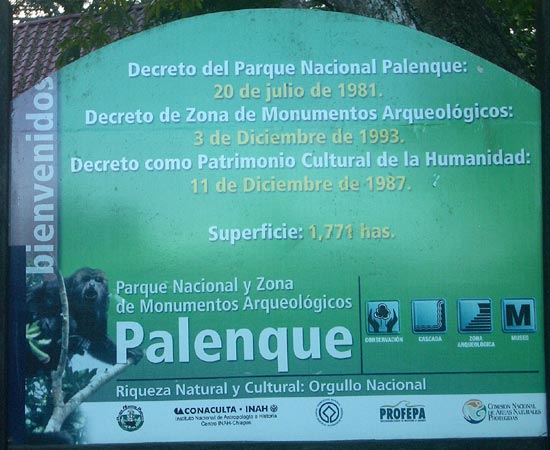
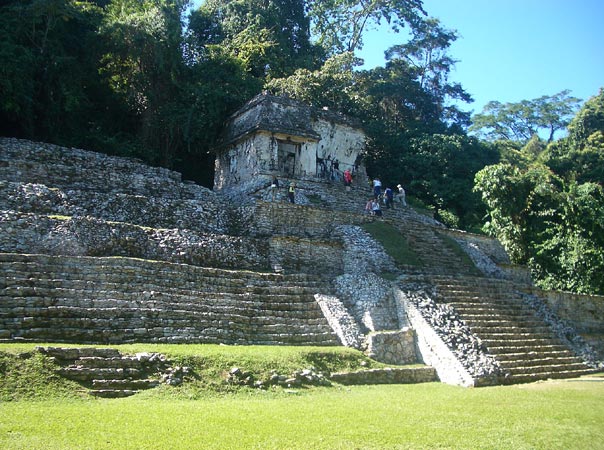
Facing the pyramid was a massive building on a platform with pillared colonnades and a high tower, the Palace.
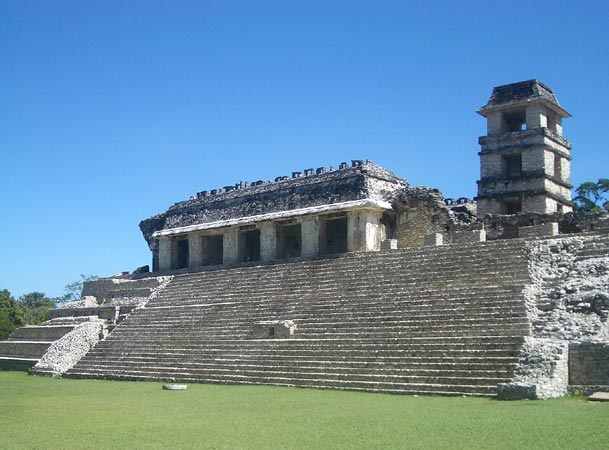
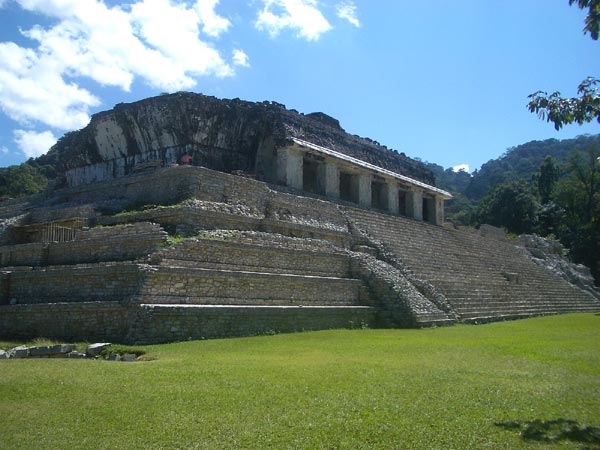
Climbing the stairs of the Palace, we walked through the ruins of rooms to enter the large interior courtyard surrounded pillared galleries, decorated with carved stone tablets with life sized images of captives, kneeling with left arms touching right shoulders in submission.
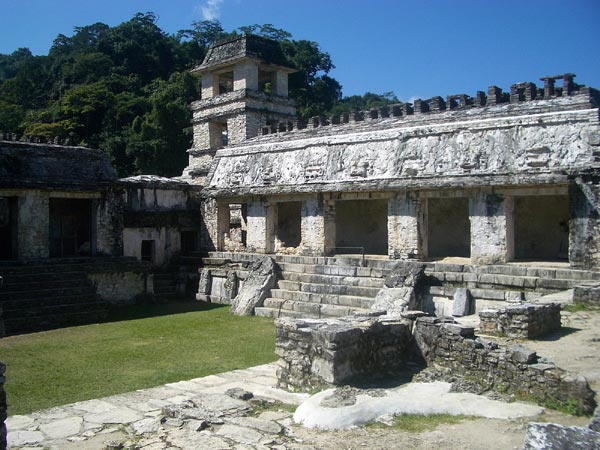
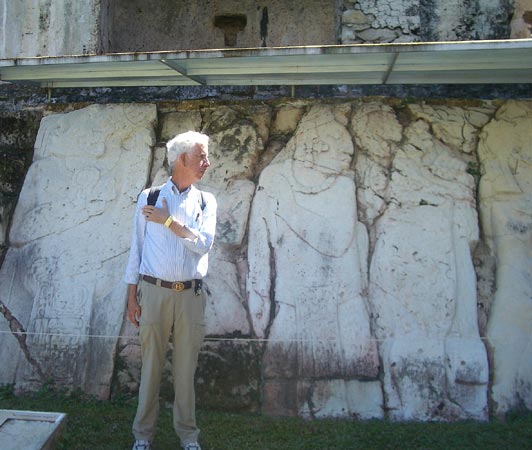
The graceful Temple of the Inscriptions, named for three large tablets with hieroglyphs describing the deeds of Hanab Pakal II 'The Great' as well as the dynastic history of Palenque to the time of his reign. This pyramid of nine platforms with a temple at the top recreated the three cosmic levels - underworld, earth and sky.
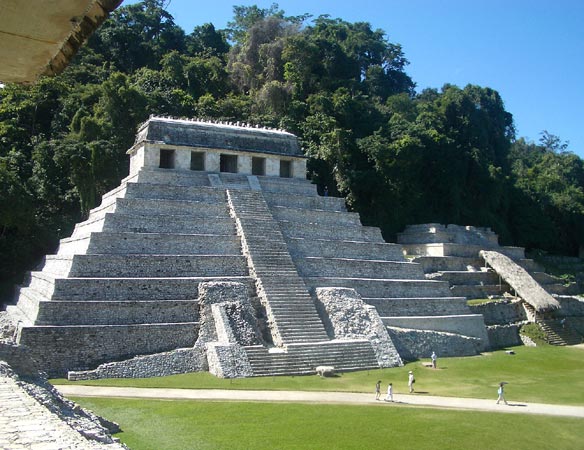
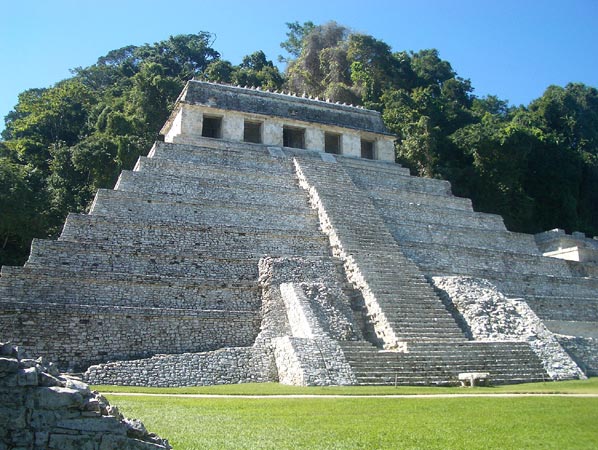
Later, during a visit to the Site Museo, we learned that deep within the pyramid was a chamber that held a sarcophagus, containing the remains of Pakal, covered by a great slab of stone.
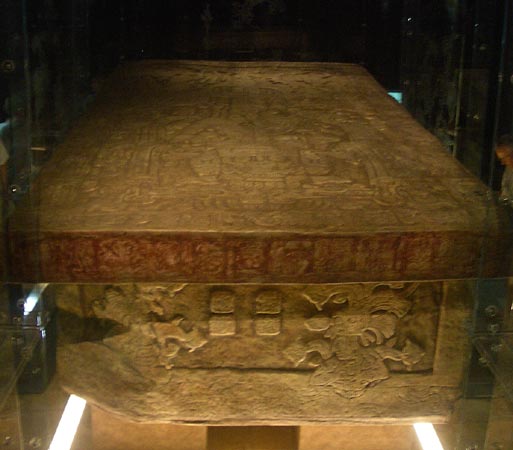
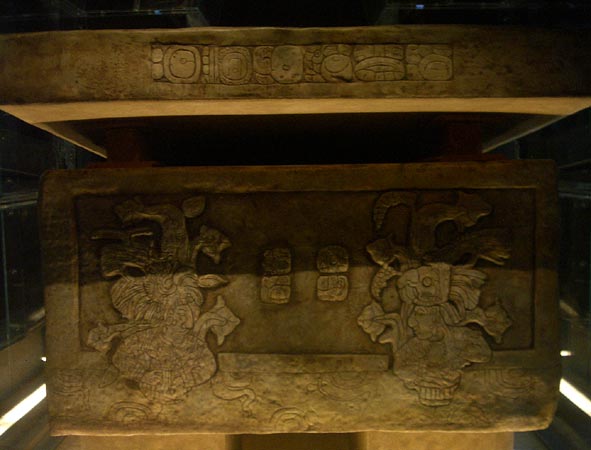
Beyond the Palace and Pyramid and across the Rio Otolum was the Crosses Group, four buildings around a plaza. This carefully planned ceremonial center provided a triumphal setting for coronations.
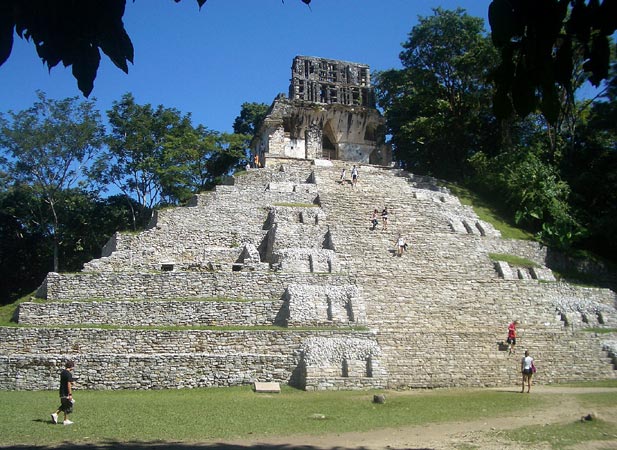
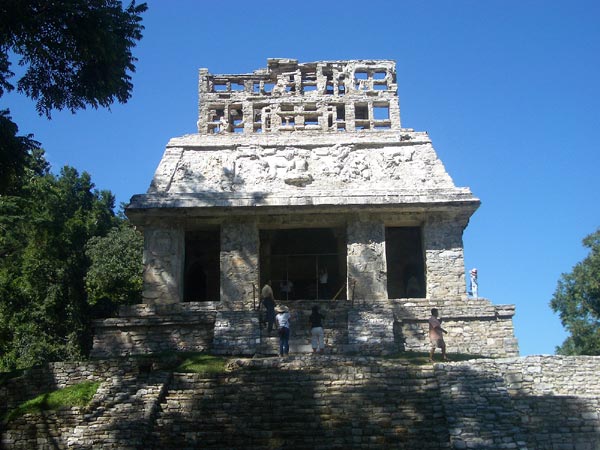
A stone tablet showed Chan Bahlum II receiving the insignia of power from his father surrounded by gods and ancestors (below left - picture from the Museo). The temples had lacy stone crests atop their roofs of amazing delicacy.
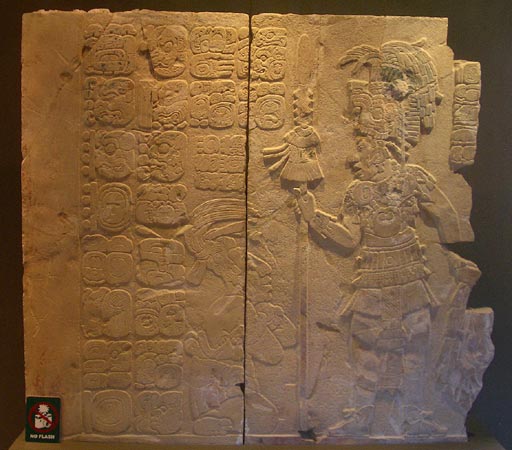
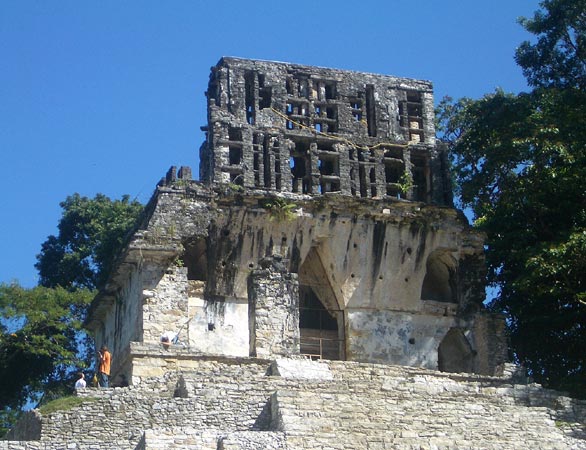
Returning to the back of the Palace, we followed the Aqueduct, lined with stones and used to control water flows and bring water to the site. Ahead was the Ball Court, reminiscent of the one we had seen at Monte Alban.
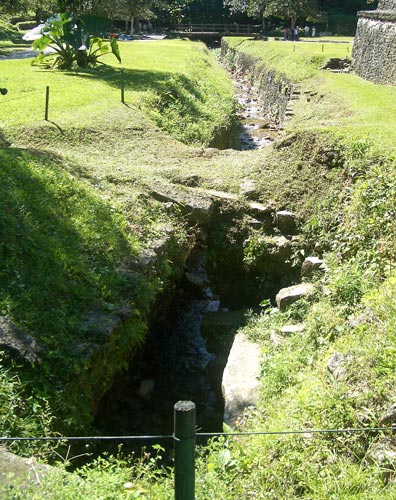
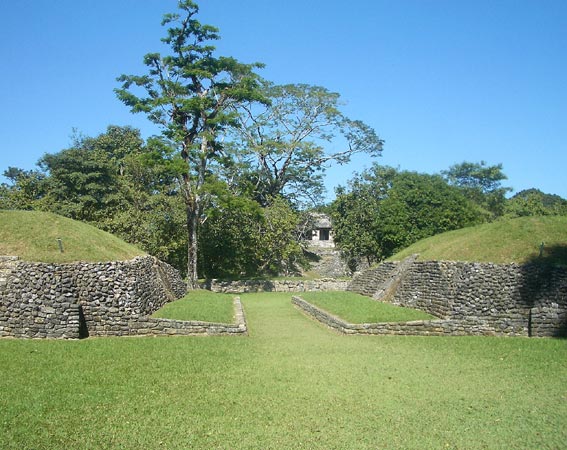
Further on was another group of temples, from which we enjoyed views out over the jungle.
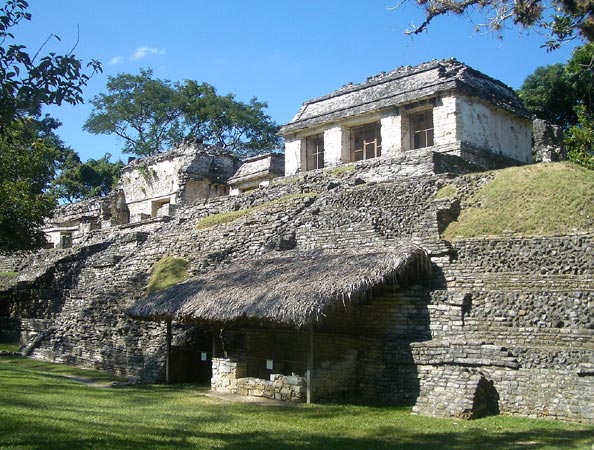
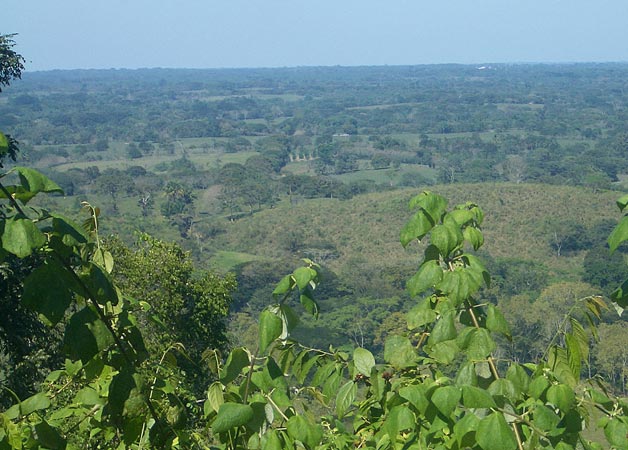
Beyond these buildings, a path led away from the site, down through deep forest. As we walked, we passed low rock walls, the ruins of the residential neighborhoods of Palenque. The river flowed over waterfalls as we descended offering a sense of cool and calm.
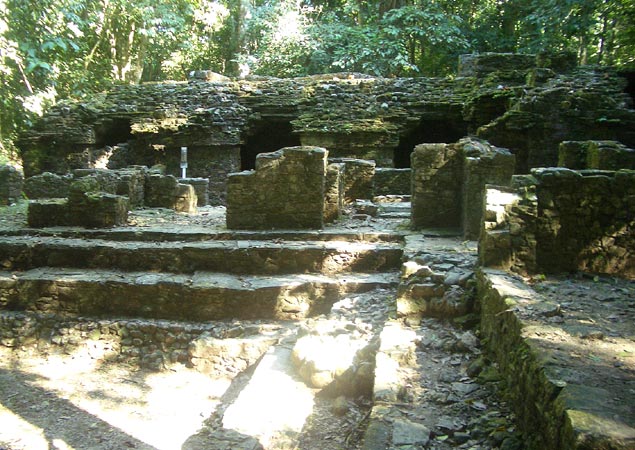
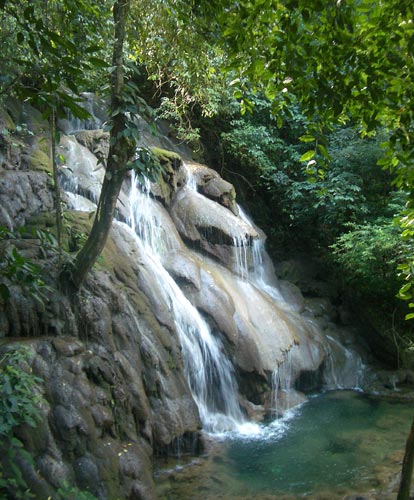
On another day, we returned to visit the Museo, where the funerary chamber of Pakal II was recreated with inscriptions and images.
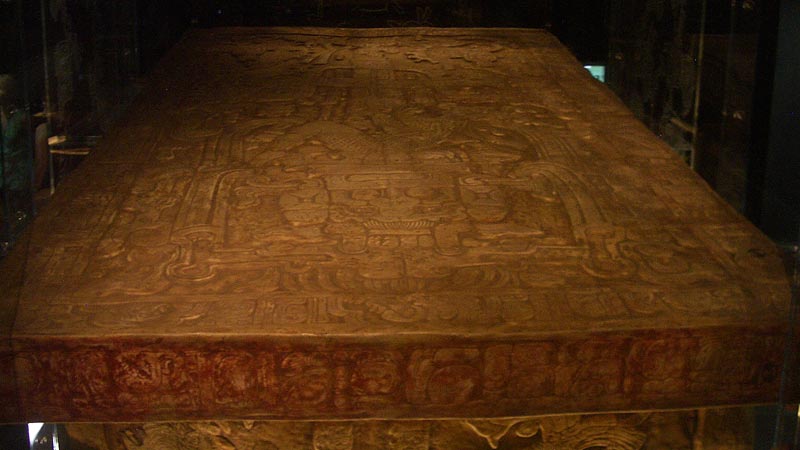
Ancestors were portrayed as fruitful trees, an appealing concept!
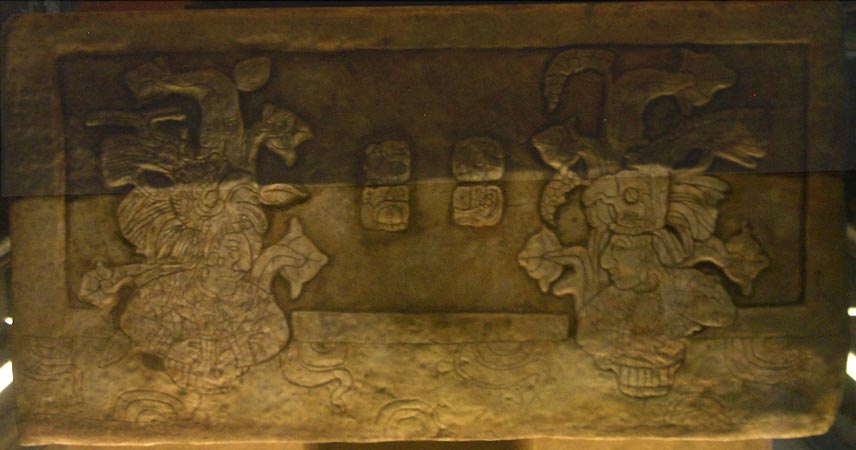
There were many intricate incense burners, censers, representing figures or faces of gods, found in various locations on site as well as tablets and figurines, attesting to the rich artistic legacy of the Mayans. A large tablet inscribed with hieroglyphs enabled scientists to interpret the history and legends of the rulers of Palenque.
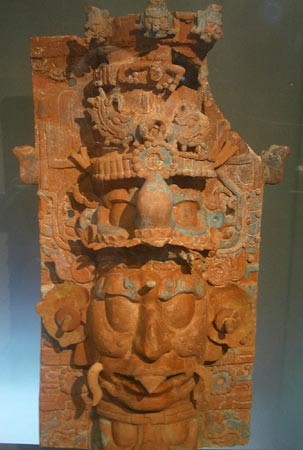
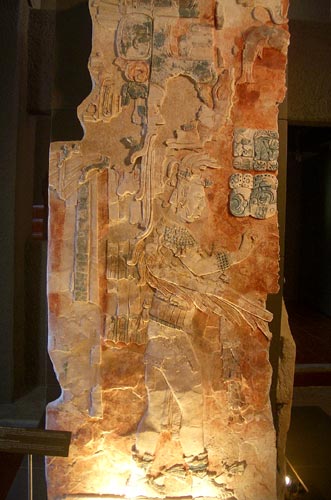
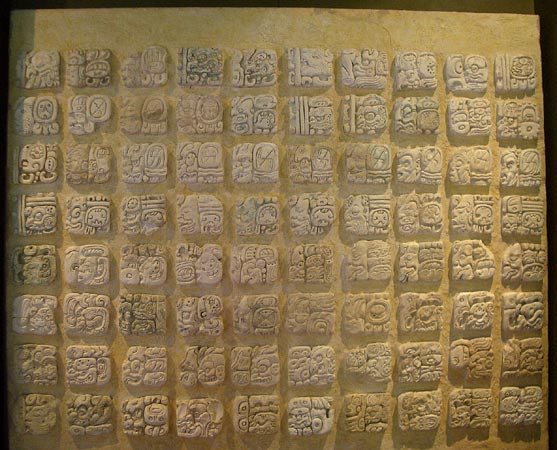
We then returned to the site to again wander past the ancient buildings, spending the rest of the day absorbing the atmosphere of this special place, our entrance into the Mayan World.
Click here to return to Our Moving on to Mexico - Winter 2008-2009 page
![]()